#and also an idea for a whole roguelike deckbuilder
Explore tagged Tumblr posts
Text
Oh no I just had a sick idea for a Slay the Spire mod….
#and also an idea for a whole roguelike deckbuilder#but i think i should start with just a mod first maybe
34 notes
·
View notes
Text
Games I Played In 2024 And Whether Or Not I Thought They Were Good (Part 4/4)
[1] - [2] - [3] - 4
Alright- here's all the games that I played but haven't completed yet. Some because they were bad, some because I forgot, and some because I just didn't find the time.
Umineko Redacted: Some Kind of Sunny Little Dream

This is an Umineko fangame that takes place in... kind of an impossible fragment? Like, completely not compliant with canon, it's not possible it could've gone this way- but then, if so, what's the point of divergence, and why'd it end up like this? There's characters who can't exist at the same time as other characters, so they must be other characters using those same identities for reasons I can't puzzle out.
I'm only like halfway through, but I last played it in like February, so I probably need to refresh myself on what's going on and what theories I had before I finish it. A real head-scratcher.
Zet Zillions

This is one of them Spire-like roguelike deckbuilder things, with some interesting mechanics. In addition to block and damage, you're also managing "population", a sort of secondary damage type where you can bombard various huge space enemies with disposable minions to take down their defenses or convert them into damage. There's also a card-combining system that compensates for some of the variance in needing to manage three resources with limited card draw, and...
...well, it's hard as hell. It's really hard to generate block, so you usually end up damage-racing stuff, and the additional complexity leads to a lot more moments where you find yourself in no-win scenarios. Tuning your deck and finding OP combos is vital- you really can't muddle through with an unoptimized goodstuff deck.
The flavor and story of it is pretty fun- it's very Gurren Lagann inspired, visually and tonally, but you're playing as, like, the remnants of an explicitly evil rapacious space empire who've been imprisoned in a time loop to stop them from conquering the galaxy? Your crew is a bunch of like, sitcom wacky evil lunatics who love violence and blowing shit up (except for your completely superfluous diplomat guy, who is weary of these antics but doesn't really object that hard to all the violence and blowing shit up. That's the whole game, after all.) 100% villain protagonists. It's... a little less funny than it thinks it is, but there's some charm to it.
There's also a kind of cool map navigation mechanic? Like, unlike in STS or similar, where you go in one direction down a branching map, the maps here let you go back and forth as you please- as long as you can stay ahead of an encroaching superboss who's chasing you, and who you can technically fight at any time to end the run if you think your build's good. You can kind of push your luck and kite it to snag additional resources if you're clever.
I've beaten several runs, but the progression seems to revolve around a final boss who's loop-aware and keeps throwing more problems at you to cheat you out of your final victory every time you think you've won. Not sure where it ends, or how it resolves.
Pokémon Vanguard

Man, I want to like this game- there's a lot of creative regional variant designs, and visual polish, and fun gameplay concepts- but there's a few things that just make it unplayable for me.
The main problem is the level cap. There's a hard level cap, past which you stop gaining experience, and it's keyed to story progression. In theory not a terrible idea... but it's so insanely low. Like, you start the game and can't level up past... I think level 8, initially? And it advances like one or two levels at a time with each story event. Your entire party is going to hit the cap like 15% of the way through each story segment, and so you'll be spending the majority of your time in difficult battles that provide no reward whatsoever.
This is deadly poison to an RPG. You cannot do this, ESPECIALLY in Pokémon. It sucks all the fun out of the game! Instead of having fun exploring the world and building your team, you're just racing from story objective to story objective so you can get out from under the yoke of the arbitrary "you can't progress anymore" number! It's awful!
(And there's sidequests! Why on earth would you add sidequests to the game when you can't possibly benefit from doing them?! It just means you hit the level cap even sooner!)
That, and the story's not much to write home about yet, as least as far as I got. It has the Pokémon Reborn problem where the story is about this huge ensemble cast of OCs who you do not know and do not care about, and very little work is done to endear these people to you. After like seven hours of gameplay (with no speedup or fast-forward feature) I'd hit level 17 and experienced no story- just a bunch of faffing about running errands for randos.
Normally this wouldn't matter much to me- Pokémon's never had good story (well- actually as of SV it has had a good story once, but you get what I mean), and that's fine because the actual thing you care about is developing your team and progressing in the game. But Vanguard doesn't let you do that- it takes a knife and stabs all the fun out of the core gameplay, holding you hostage to a story that, being as generous as possible, takes too long to get going.
Donkey Kong 64

Here- here- here we go!
From ages 5 through 8, I owned a Nintendo 64 and a grand total of three games. Two of them were Pokémon Snap and Pokémon Stadium, which I played the hell out of and got very good at. And the other... was DK64.
At age 5, I could not make heads or tails of DK64. The camera controls frustrated me, I didn't understand the logic of the level design, I couldn't figure out how to progress, I was terrified of the big spiky bees... it wasn't a good time for me! So I rarely touched it. I never got any further than Angry Aztec, and even that was with my cousins' help.
At age 30, I realized- hey, wait a minute! I was five back then! Of course I sucked at video games! Surely if I go back to it now, it'll make way more sense and be easy to fully experience.
And nope! No, this game just sucks every ass! Wow! The controls and camera are godawful, and the level design is a surreal nightmare where cause and effect refuse to come within 100 feet of each other. Doing things will just randomly cause other, unrelated things to happen halfway across the map, and it loves sticking timers on those things for no reason at all. The camera control is based on discrete movement intervals, and objects and walls block the camera very easily. The game frequently wants you to scramble down a narrow path, and you can't rely on the camera being at an angle that lets you do this smoothly, so you'll constantly be falling off of stuff it ought to be trivial to not fall off of.
On top of that... there's this system where levels contain color-coded collectibles and switches that only a certain Kong can interact with, and this really does nothing for the experience. It just means you need to backtrack to various parts of the level as a different guy to pick up some bananas that were intangible for no reason before. Their respective abilities don't vary enough to make this re-traversal interesting- it's just a waste of time.
Also fuck this guy:

Supermarket Simulator

Another game in the "the Game Grumps were awful at it and I had to see if I could do better" genre, cousin to Home Safety Hotline. It's pretty simple! You have a store- you buy products, stock shelves, sell the products at a markup, ring up customers, and try to expand. Keeping track of inventory and staying on top of customer demand is decently fun.
It's... like, fine? Very basic. The issue is that the main progression loop just slows to a crawl like ten expansions in. If you want to upgrade your store- get more space, stock new types of products- you have to buy renovations and product licenses. Product licenses let you buy more expensive and popular products and make more money to buy more expensive product licenses... in theory.
In practice, basically all products have the same randomly-fluctuating profit margin- yeah, they're more expensive, but that means they're more expensive to stock up on. So once you reach a certain point, the amount of cash you're bringing in stays roughly constant, even though you're dealing with more customers and more volume. And the progression prices... seem to assume that you're experiencing some kind of idle game-style exponential progression in income?
Which... you're not. You're super not. There's so many levels of progression in the game, each half an order of magnitude more expensive than the last for very little benefit, that you're basically never going to complete the thing in a human lifetime. The balance is way off. That kinda sapped my will to continue, so I put it down.
Super Mario 3D World + Bowser's Fury

I've always perceived a difference between the 2D Mario games and the 3D ones- one that isn't just down to the extra dimension. They've got very different design philosophies- and nowhere is this more evident than in Super Mario 3D World, which is a 2D Mario game that just happens to have three-dimensional movement.
It's very weird! You've got the exact same "map full of linear levels with a flagpole at the end" design, the same kind of stiff movement and powerups, the same "collect three secrets I mean four secrets and make sure to hit the top of the flagpole at the end" structure... it feels completely different from your Galaxies and your Odysseys and stuff.
I've always found these Mario games kind of lifeless and unpleasant compared to the more open 3D Marios. The way you're on a timer, the way the "secrets" are the real progression and you feel like you're missing out and failing the level if you don't get them all, the super-linear level design, the less forgiving health and damage system... I don't like it.
That said, due to stubbornness, I did 100% every world... up until the last super-duper-final "crown" bonus world, with the one ultra-hard level you have to beat as all the characters. I got stuck on that one, because holy shit, Rosalina's level is nonsense. Fucking, the galaxy goombas who don't die if you jump on them, on moving platforms so you can't ground-pound them reliably? The gauntlet of gaps that you have to dash across and sometimes just slip in between? The switch jumps that demand perfect timing and sometimes just drop you through the floor? I got past all that, past the magikoopa fight on the falling floor, and then- fucking hell, there's this whole gauntlet of spiky swings after that? And no mercy raccoon leaf for failing too many times? Jesus christ! This shit's disgusting!
I'm gonna beat it eventually though. And then maybe I'll figure out how the heck I'm supposed to get to that "Bowser's Fury" mode that's supposedly its own little open world game thing? No idea how that's triggered.
UFO 50

This one I didn't finish because it's fifty games! Yeah! Like 50 fully-featured fake NES games! Are you kidding me? I'm not finishing that!
I did play "Porgy" to completion, though, so I'll talk about that one.
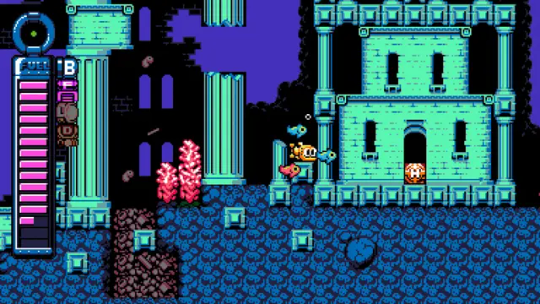
Porgy is a metroidvania where you play as an ecologist in a submarine, trying to figure out why everything in the ocean suddenly wants to kill her! That's basically all the context you get for most of the game, until you beat the final boss and get an explanation.
The game itself revolves around scavenging submarine upgrades from a huge world- huge enough that initially, you don't have enough oxygen to reach all its depths. If you run out of oxygen, you have to retreat to your sub hangar without all the loot you collected, so you've got to plan around that.
Oxygen is the everything resource. Oxygen depletes when you move, it depletes when you fire stun torpedoes, it depletes when you dash, and it depletes when you get hit by enemies. Your health bar is also your everything-else bar, so you want to be collecting upgrades that increase your max health or decrease the rate at which it depletes. It's a good design decision, simplifying what you have to keep track of.
Where things get complicated is the upgrades. You can increase your max health and torpedo range and stuff as much as you want, but all the other progression stuff- a drill for going through dirt walls, bombs for destroying cracked stone, a light for seeing in the dark... you can only equip four items at a time. And that's tough, because there's a lot more than four different types of thing that can be in your way! Meaning every time you set out, you need to decide which traversal powers (and other upgrades) are going to be necessary for exploring the place you're trying to scope out. Sometimes you're wrong, and you gotta head home and figure out a different loadout!
It's all just very tightly-designed and satisfying to play, with tons of collectibles and secrets to hunt down. Really good stuff.
oh and the rest of UFO 50 is all games of similar complexity and quality, it rules, check it out
-
And that's it for 2024! I'm gonna do a roundup post with scores later.
[1] - [2] - [3] - 4
#game rec#game review#ufo 50#zet zillions#some kind of sunny little dream#mario 3d world#aaand not gonna tag the ones that'll piss people off
8 notes
·
View notes
Text
Off-topic weekend: My top five games of 2023!
Hey folks! How's Splatfest going? I've had mixed success so far, winning two 10x battles but losing a 100x, which evens out, right?
But let's not focus on that, this is the off-topic post of the month, after all. In 2023 I played an unusual amount of brand-new games, and I like talking about the stuff I like, so let's real quick go over my favourite games of the year, in order!
Starting with:
5. Wildfrost
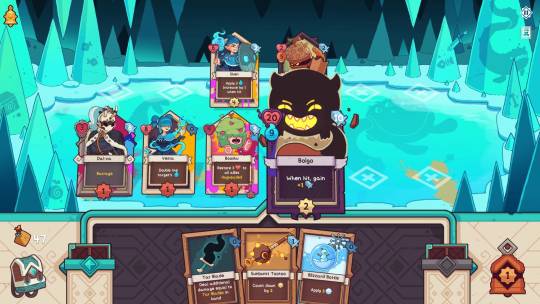
Wildfrost is a roguelike deckbuilder about disparate tribes banding together to fight off a supernatural, eternal snowstorm. Over the course of three areas and many battles you assemble a deck of allies and items, augment them with upgrades, and face off against a whole slew of unique and challenging boss battles. The thing I wanna highlight about this game is just how gorgeous the presentation is. All the character designs are delightful, and the way everything bobs and shakes as you pick cards to play or reposition feels just right. The soundtrack is also a complete slam dunk, using a ton of traditional instruments to help sell the vibes, whether they're cosy like in your hubtown or intense like the battle themes. If you like games like Slay the Spire or Monster Train then this is definitively a game for you.
4. Cocoon
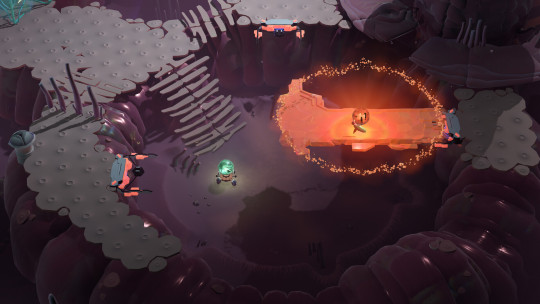
Cocoon is a puzzle game about exploring alien landscapes with tools that are also full-on worlds in themselves. As a little... alien? Moth? Robot? As a little guy, you're tasked with solving a wide variety of puzzles by using differently colored orbs that, when placed on certain pedestals in the environment, opens up portals to entire new realms. Nestling realities within other realities and traveling between them soon becomes a core facet of your problem-solving, and the beauty of Cocoon is that its puzzles thread this extremely thin line where the solution is neither too hard or easy, but will always be very satisfying and frequently mindblowing in the way it makes you bend reality(or realities as the case may be) to your whims. Cocoon is lean, slim, and polished, and likely won't last you more than ten hours, but those ten hours will leave you feeling a smart and satisfied in a way you've never experienced before.
3. Remnant II
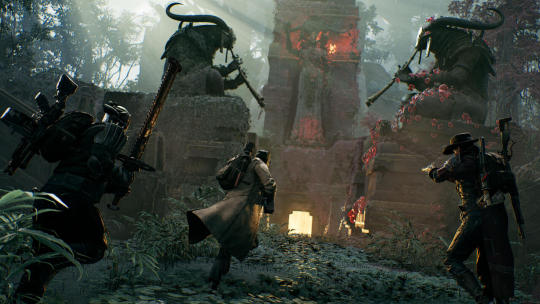
In 2019, Remnant: From the Ashes asked a bold question: "What if Dark Souls, but guns?" The answer turned out to be that you got a fun, interesting third-person shooter with defensive play inspired by Fromsoftware's lineage of action RPGs but with a greater emphasis on co-op play and replayability, and in 2023, that game got a sequel that looked to expand on all of its predecessor's most interesting ideas. One of the most impressive things about remnant II is just how much content it has that it doesn't show you, because it's designed around the core idea that every player's first playthrough feels different and so it only shows you a sliver of its hand in every playthrough, confident in its breadth of content to such an extend that the game let's you roll an entire new randomized campaign with a single press of a button. I'll admit that out of everything on this list, Remnant II is probably the most "by-the-numbers" game on this list, in part by virtue of being the only sequel on it, but I had a blast playing this game, and if you're looking for something to play with a friend or two, then I think you will too.
2. Cassette Beasts

Cassette Beasts is a creature-collector RPG in the style of Pokémon, and I actually already wrote a whole post about Cassette Beasts earlier this year, but I want to reiterate that this game is really good. In a lot of ways, it feels like Bytten Studios, the developers of Cassette Beasts, took the formula of the DS-era Pokémon games and utterly perfected it. It's got a big open world for you to explore, deep and snappy 2v2 combat, over 120 monsters, all of which can be fused mid-combat as the ace up your sleeve. Rather than type weaknesses just increasing damage, they inflict various buffs/debuffs that add a lot of complication to battles and force you really consider your team composition. There's adjustable difficulty, including a built-in nuzlocke mode. There a bunch of cool companion characters with their own entire storylines, and most of them you can romance if you'd like. If you like Pokémon or the whole creature-collector RPG genre as a whole, then you need to play Cassette Beasts, because at the moment I really do think it's the king of the genre.
1. Lies of P
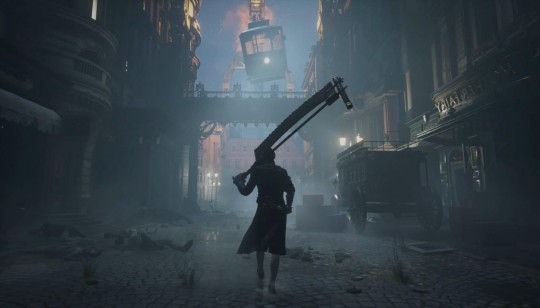
Lies of P is an action RPG of the Soulslike variety, taking a stab at replicating the formula that made Fromsoftware and their critically renowned games such a household name. I like Fromsoftware and their games lot, Bloodborne, Dark Souls 3, Sekiro, and Elden Ring are all pretty high on my list of favourite games of all time for their excellent world design, wonderful atmosphere, and captivating combat. I mention all of this so that you understand that it's a big deal when I say Lies of P is so good that it sometimes beats Fromsoftware at their own game.
It's not a game without flaws. I found the english localization to be awkward and stilted, sometimes to the point of being distracting, and its level design is very simple, especially compared to its peers. What sets Lies of P apart however is that it has the best goddamn combat in the genre. Explaining why I think that would take a lot of time, and this post is running long as is, so to keep things short the gist of it is that Lies of P manages to make your offensive and defensive tools flow into each other seamlessly, with dodges, blocks and parries allowing you to keep up the pressure even as enemies are attacking. Couple that with a ton of different weapons, all with their own special moves, most of which you can take apart and combine with other weapons, and a mechanical left arm that can be equipped with a variety of tools like a flamethrower or a grappling hook, and it results in one of the most nuanced combat systems I've ever seen.
I adore Lies of P. I bought it at the end of December, beat it once, and I am currently doing three more playthroughs with different builds, weapons, and restrictions. I've never enjoyed mastering the systems of a game as much as I have playing Lies of P, and that is ultimately why it's my favourite game of 2023.
And that's the whole list! I hope something I featured here caught your attention, and I'm very curious to know what y'all's favourite games of 2023 were, so go ahead and tell me below, if you'd like. Happy continued FrostyFesting!
37 notes
·
View notes
Text
Some spoiler stuff under the cut
The saddest thing is that there are good ideas here, but they are all jostling for space because instead of picking one (or like three), he just decided to do ALL OF THEM just throwing them at the wall to see what sticks but the wall is Teflon so, like this metaphor, it ultimately all falls apart. Each act uses a different framework for the core card game but all the """care""" used for those should have just gone into the actual card game instead of whatever harebrained creepy pasta bullshit (the new trilogy of HAUNTED GAMES: bendrowned, sonic.exe and Inscryption apparently) he came up with, this whole thing would be way, waaay cooler. Leshy's cabin/Act 1 was a super dark, super atmospheric take on the Slay the Spire formula with a really cool core mechanic as far as the card game is concerned: you have to sacrifice cards to play stronger ones, and for every creature that dies, you get bones which can also be used to summon creatures. Act 2, which rips off the old Pokémon TCG for Gameboy for its overworld, introduces two more types of card, with mechanics that aren't really explained and don't gel with the Blood and Sacrifice. You fight a couple of battles that don't carry nearly the amount of tension or fun of Leshy's cabin not least because Leshy as the unhinged storyteller/gamemaster is absent. Then the robot TAKES OVER THE GAME SPOOOKY and that was the point I just uninstalled. Apparently if I manage to slog through whatever crap the robot wants from me I'd get to just play Leshy's cabin again but the card game is not as deep as it could be (as other deckbuilding roguelikes are) because instead of focusing on that, the designer did all that other extraneous bullshit, up to and including filming cringy handheld stuff that purports to tie into the story but js also curiously divorced. And you don't need to have written papers in Game Studies to realize that "watch amateur movies on a handheld camera" is not really video game storytelling.
I should have remembered my lesson from Pony Island: this man has IDEAS but no good grasp on how to use them; and he is not half as clever as he thinks he is.
I'll probably just go back to Vault of the Void, or maybe Roguebook (which handles the metafiction aspect much better but is overburdened by mechanics; it was designed bt the dude who invented MTG so no surprise there).
Inscryption. Or: what if my mid-tier deckbuilder also was a creepy pasta (and a cringy YouTube channel found footage """"horror"""").
#narrative theory#snark#inscryption#no seriously fuck this game#refund period exceeded#glad i got it on sale at least
7 notes
·
View notes
Note
🍎
I’m curious about what sorts of videogames you usually play. I’d been meaning to ask you if you’ve seen TUNIC but I didn’t know if you kept up with action RPGs
I haven't played TUNIC but I'll take this opportunity to give my general opinions on various genres. I'm going to be brief but you're all encouraged to ask further questions.
RPGs: I love all kinds of RPGs, whether they're turn-based or action. If there's one style I dislike then it would be real time with pause.
I also prefer western RPGs that draw more closely from tabletop games over JRPGs. Freedom and immersion are some of the things I prioritize the most in these games.
S-tier.
Strategy: My second favorite genre after RPGs. I have a preference for turn-based ones and have played many of the really influential/significant games in the genre. I don't really have the ability to make my fingers zoom as fast as they need to in order to be really good at RTS though. I also just prefer being able to take my time to look at things and multitask a little.
A-tier.
Deckbuilding Roguelikes: I like many aspects of these, from building synergies to using cards to express various things and figuring out complex interactions.
A-tier.
Simulation: Depending on the level of detail and complexity, this can easily be really engaging.
B-tier.
Immersive Sim: Depends on what kinds of completely cracked things you are allowed to do in them but there's enough interesting games in here to warrant a high rating from me.
B-tier.
Shooters: Both first and third person are good. I don't really have a preference when it comes to camera position.
However, I think more "realistic" shooters with real-life weapons tend to be bland compared to the more creative and diverse arsenals and abilities you get in more sci-fi games.
B-tier.
Horror: Fiction doesn't really scare me, so there's an aspect to these games that I feel I'm missing and if they don't have much else going for them I'm not going to like it. However, a lot of horror games have really good aesthetics and manage to incorporate fun mechanics. I especially like some of the Resident Evil games and stuff like Darkwood.
B-tier.
Survival: For some reason, I really like the idea behind many of these games. Having to gather and manage resources and build up a cool and comfortable base in a hostile environment and all. Particularly fun with friends.
B-tier.
Mystery/Detective Games: There's lots of ways to sabotage this genre by pretty much leading the player to the right answer, but there's also clever ways to make them reach those satisfying conclusions on their own. I really enjoy figuring things like this out.
B-tier.
Shoot 'em Ups: Touhou and (to a much lesser extent) Deathsmiles are really the only series in this genre that I have much of an interest in. Touhou is definitely A-tier even in terms of just playing it, but most of the time this is just fine and not particularly noteworthy to me.
C-tier.
Beat 'em Ups + Platformers + Action-Adventure + Puzzle + Metroidvanias + Stealth + Tower Defense: All of these are decent for passing time, and some of the best ones are definitely worth it. However the genre as a whole is usually not what I even look at when I'm thinking about what I want to do.
C-tier.
MMORPG: I can only really enjoy these if I'm playing with friends. I see an incredible amount of potential in this genre, and would even say that it is possibly the most interesting one in all of gaming, but it has various issues and I'm also just not talkative enough to be the type of person who really enjoys it.
C-tier.
Fighting: I want to like fighting games. I often really like a lot of the characters from them (they tend to have amazing designs) and I really appreciate the artistry involved in expressing what a character is about through their moveset and animations.
However, I struggle to actually play them for very long because they can make my chronic pain flare up. Even just playing casually against the computer comes at a cost because of that.
C-tier.
Idle Games: "Enjoyable" only on a really superficial level without the quality of design to carry it any further. I can't say I like these games.
D-tier.
Rhythm: It's not a bad concept but it doesn't really stimulate me the way other games do and I also don't have the timing to be very good at these.
F-tier.
Racing: If there's some form of combat involved this can reach D-tier at best but otherwise it's just not that interesting to me.
F-tier.
MOBA: No.
F-tier.
Gacha: I will look at the hentai but otherwise see this as a blight upon games.
F-tier.
Sports: Absolutely not for me.
F-tier.
2 notes
·
View notes
Text
20 Days of Prototypes Challenge Complete!
I’ve just finished my 20 days of prototypes challenge and come up with 10 brand-new prototypes for the next BrainGoodGame (or games!) The idea is to be able to be able to make them quickly and then draw from a larger pool rather than getting stuck trying to “force” one idea. Anyway, I thought I’d describe each to you so I could get some feedback! (Feedback notes and challenge reflections after the list of games). Anyway, here are the prototypes!

A sort-of haiku of 9 of the 10 game prototypes.
“Lawnmower” – A simple real-time game where you attempt to control multiple lawnmowers and keep them cutting grass! You can also play new lawnmowers. This is supposed to sort of capture the feel of Mini Metro. (Non-panicky real-time)

Dividing your attention.
“Blob-Commander” – A game where you pick an “order” die (on the left) and combine it with a “selection” card (on the right) to give an order each turn. So you might “move forward twice with all archers, or move left and attack with all units that are connected in a “blob”. An interesting idea but has problems in terms of “action parsing” or proofreading.
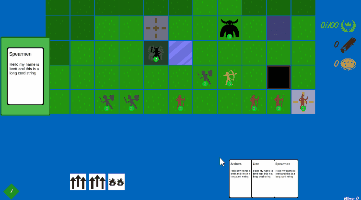
Issue orders to groups.
“Protector” – An idea where you have 3 energy or action points to spend each turn. Most commonly you spend it moving around the map (up,down,left,right), but you can also spend the energy points on cards in your hand. Enemies move after you’re done and can be fast and slow. This one seems particularly open ended in terms of extending it. Lots of possibilities for enemy types, card types and even objectives (although I like the idea of a “there and back again” type objective because if you rush ahead and don’t fight much it’ll be harder on the way back but not impossible). Also tends to have a playful feel at least for me, as I find a lot of the time I can hit the arrow keys by intuition.
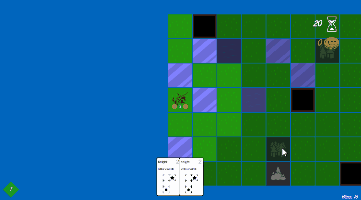
Ride forth, playfully!
“Dominion Lord” – The idea here is that for both you and your opponent, the cards in your hand correspond 1:1 with units on the board. So the action funnel is pretty explicit. If the unit is not on the board, the card becomes a “summon” action instead. One downside of this approach is that it seems much more fun to order units “near the front”. Maybe it needs a double move option for guys in the back like XCOM, or a different kind of objective. This is sort of like Undaunted.

Units in a deck.
“Farmer Dan” – This one is about moving around a single avatar on a map again (like #3). However here, as you move around a couple things can happen. If you move into a grass space, you “till” it, making it ready for new crops. If you move into a weed rock or stump you work on clearing it (some take more than one action). Then you have tetris pieces in your hand representing both crops and watering actions that you try to line up with the shapes on the board you have cleared with your farmer. There is a whole efficiency game about farmer actions, about lining up the crops properly and trying to refill water without wasting it. Pretty interesting. What this one seems to need is longer strategic arcs or something to “build towards”. Not quite sure what that might be.
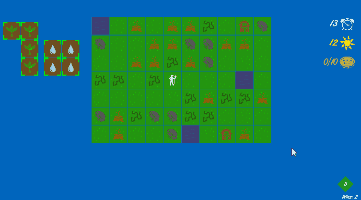
Farming with tetris pieces.
“Deus Lines” – This one is fundamentally about building out action chains on the board. You place buildings that have an action on them and also allow your workers to “turn” as they activate them. Crucially, each turn you place a building and then send a worker in, but you can only send a worker from each side once. You can reactivate abilities by cleverly positioning your turns. Sort of a riff on the Deus/Wingspan “action-chains” type of thing. This one is pretty complex though to get started with, so needs some simple goals to work probably.

A maze of chained abilities.
“Minos Mana” – This one is roughly about building off of matched colored pieces on the board to make shapes. So sort of like Through the Desert network building and sort of like Minos Strategos (or Tash Kalar) shape building. Needs more definition to what shapes you’re trying to build, and whether those are explicit goals, or patterns that always work, or cards that you draw. Has a couple cool twists. One is that you pick up new dice off the board as you go. Two is that the enemies spawn based on an intersection of row and column, and it alternates whether the spawn row or spawn column switches. Three is that you are working against the “enemy score” and they score by capturing your placed pieces. Therefore there is an upside for spreading out (more patterns) and a downside (more vulnerability).

Patterns of elemental mana!
“Dungeon Beans” – Called “beans” because of the name our group uses for Bohnanza, which is a game where you can’t re-order your hand. The premise here is that you have a set amount of energy. Playing the left most card in your hand costs 0 energy, but each card to the right costs 1 more (so it’s more expensive to skip ahead). You can also always just do a “default” up down left or right move/attack by discarding the leftmost card. This one also seems super extensible and easy to see as a full game. It takes a lot from roguelikes/broughlikes in terms of structure (slay enemies, be efficient, get to the exit). Seems to be a lot of room for deckbuilding, card types, treasure, monster types, etc.
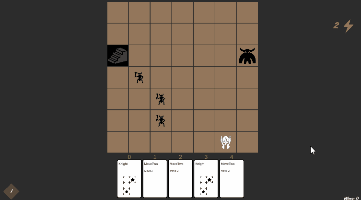
It’s hard work to skip ahead!
“Card Maze” – This one is about moving on a grid using standard playing cards. If you match “suits” you get to move and go down a card. If you match “rank” you get to re-draw at the end of the turn. If you match both you get to draw 2 (plus one card). You can also collect totems on the board that let you discard and re-draw your hand. Once you collect 3/4 totems you head for the exit. Already quite fun and very extensible with enemy types, different suits, special powers for Jacks (there are no Jack spaces on the board), pickups, starting characters etc etc. With the playing card metaphor I think it is a bit more approachable than most BrainGoodGames for non-strategy gamers. Very intriguing!

Matching feels good!
“High Seas” – The final prototype is kind of the inverse of the previous. By stepping onto ocean spaces you draw the indicated card. You’re trying to make sets of cards, runs, basically typical poker card hands and use them to “battle” other ships. Lots of ways this can work, and it’s fun to collect the hands and scout out the best cards to collect and asses the diminishing returns (you have limited time, can’t take em all and have to make your way north!). I have some ideas about how different enemies can work, different pickups and sub-goals and selling big sets at “markets” for a lot of points. Goal being have X money and get to “port” at the north of the board to bury your treasure/buy the port/retire etc. Promising!

Cannons are loaded. Full house!
So those are the 10 prototypes from the 20 day experiment! It took about 2 days for each prototype, and the process ended up mostly being
Day 1: Brainstorm ideas by reviewing design notebooks and mix and matching game mechanic cards that I’ve drawn up/seem interesting to explore.
Day 2: Make the digital implementation of the prototype.
One thing that stuck out to me was that my prediction of how promising each prototype would be was often very far from my evaluation after making it. Some were much better than I thought they’d be, others much worse. Takeaway: you gotta make em and see. Don’t get hung up looking for the “perfect idea”, because it’s hard to identify!
The goal of the digital implementations was mostly to assess each idea for how promising it seemed, and how easy it would be to take it from the current state to a released BrainGoodGame. I have ideas about the potential of some of them, but I’m curious what you guys think with just the gifs and the basic descriptions to go on. Which ones jump out at you? Let me know on the Discord or on Twitter.
If you’re interested in the games I end up making with these prototypes, please sign up for the BrainGoodGames mailing list here.
1 note
·
View note
Text
Why Marvel’s Midnight Suns Gameplay Has Fans Worried
https://ift.tt/eA8V8J
Marvel’s Midnight Suns arguably stole the show during last week’s Gamescom Opening Night ceremony, but the reveal of the upcoming strategy title’s gameplay has already caused a bit of a divide in what recently seemed to be a pretty enthusiastic fanbase.
If you’re watching that gameplay reveal for the first time, you may be wondering what the big deal is. After all, most people assumed that Midnight Suns was going to be a strategy game set in the Marvel universe, and that’s pretty much what it seems to be.
However, much of the controversy surrounding Midnight Suns‘ gameplay at the moment is based on a brief line in that preview regarding the game’s use of a “card” system. It might not sound like much, but that one piece of information has already triggered a heated discussion regarding the game’s potential, its potential association with some especially unpopular ideas, and what all of that means for the considerable expectations fans had for this project.
How Does Marvel’s Midnight Suns Card Gameplay Work?
The video above offers a fairly comprehensive look at Midnight Suns‘ gameplay, but it does gloss over some of the specifics of the upcoming title’s card-based elements. Whether the developers are trying to hide something about that aspect of the title is really the heart of this particular controversy at the moment.
However, the team at Firaxis has shared additional details about Midnight Suns‘ card-based combat system that do help explain how the whole thing will work. Here’s what Jake Solomon, Creative Director at Firaxis, had to say about the game’s card-based combat mechanics in a recent press release:
“In Marvel’s Midnight Suns, you aren’t learning how to fight or gradually grow stronger – you and your fellow heroes are already legends, and must combine everything in your arsenal to stop Lilith. Cards provide a new and refreshing way to approach tactics, allowing us to really go all-out in designing a combat system that makes every hero feel, look, and play differently.”
Elsewhere, IGN expands upon the specifics of Midnight Suns‘ combat system by clarifying it is not a CCG game in the style of titles like Hearthstone or Shadowverse. Instead, Midnight Suns is closer to a deckbuilding roguelike game like Slay the Spire or even a card-based RPG like Baten Kaitos Origins.
Some of the gameplay specifics have yet to be revealed, but it basically sounds like you’ll be dealt a random hand of ability cards at the start of combat. You can acquire new cards and build your own deck through gameplay and story progression, but it seems like part of the game’s strategy will be based on your ability to make the most of the cards you’re ultimately dealt.
On top of that, Midnight Suns allows you to weaponize parts of the environment and use special “team” moves that will maximize your squad’s damage potential. Again, it’s not entirely clear how much randomization will ultimately impact the combat experience, but it does seem like the idea is to add a little variety to every encounter by requiring you to manage different abilities/environmental opportunities. It’s also not entirely clear how movement in the game will work, though it does sound like it will be relatively limited and not nearly as important as it is in Firaxis’ XCOM games.
Basically, Midnight Suns appears to be a squad-based strategy game where your combat actions are determined by “card-like” abilities that you’re dealt at the beginning of combat. Those combat sequences will also seemingly emphasize managing your abilities over positioning/movement, but the game’s environmental damage mechanics and team-building features may add a little depth to the experience.
So what’s the problem with all of that? Well, I’m glad you asked…
Marvel’s Midnight Suns Has to Overcome the CCG Genre’s Bad Reputation
As digital CCGs have become more and more popular over the years (or at least as they’ve become more successful), they’ve also acquired a negative reputation for perfectly representing some of the shadier elements of the modern gaming industry. Specifically, some gamers have been trained to see cards in a video game and think of two potentially major mechanical turn-offs: randomness (RNG) and pay-to-win features.
There’s a degree to which randomness is an unavoidable part of any card-based game. After all, the entire CCG genre is based on playing the hand you’re dealt. However, most fans are ok with that RNG element of the genre as there’s something satisfying about building the best deck possible and trying to outthink your opponent with the help of the cards in your hand.
The problem is that some card games take randomness too far. The prime example of this problem has to be Hearthstone: a CCG that has piled random mechanics on top of random mechanics in recent years to the point where victory can sometimes feel like a roll of the dice rather than the result of being the one who best played the hand they were dealt. While Hearthstone has gotten better about that level of randomness in recent expansions, it’s clear that CCG developers are still resisting the urge to tap into that sometimes addictive “gambling” quality that comes with such wild randomness.
That brings us to the dreaded topic of pay-to-win mechanics and CCG “loot boxes.”
Many CCG titles require you to build your own deck of cards, and most CCG titles require you to buy packs of cards in order to expand your collection. The problem is that you often don’t know which individual cards you’re going to get in a pack. That means your best “strategy” is to buy as many packs as possible in order to help ensure that you eventually find the specific cards you’re looking for.
It’s an unfortunate element of the CCG genre made that much worse by the rise of loot boxes and the many ways that card packs perfectly represent how frustrating loot boxes can be. While you can win those games without spending a small fortune, it’s hard to deny that spending money makes things a little easier.
Will Marvel’s Midnight Suns Have Loot Boxes and Card Packs?
Thankfully, the definitive answer to that question is “No.” In fact, the Midnight Suns team was quick to address this particular concern via Twitter:
Hey folks, regarding our battle card system, there are no loot boxes in Marvel's @MidnightSuns or related microtransactions to get more cards (i.e. Gamma Coils). We will have purely cosmetic character skins for purchase that do not affect game balance in any way https://t.co/lHhdwbMpSZ
— Marvel's Midnight Suns (@midnightsuns) September 1, 2021
That brings us back to the idea that Midnight Suns is closer to a deckbuilding roguelike/RPG than a CCG game. While there’s always a bit of wiggle room here when you’re talking about microtransactions, it at least sounds like you shouldn’t expect to have to buy a bunch of packs just to be able to play Midnight Suns.
While that’s obviously a good thing, that tweet doesn’t exactly address all the concerns fans currently have about Midnight Suns…
Marvel’s Midnight Suns Already Reminds Some Fans of a Mobile Title
Mobile games are undeniably popular, and mobile games are becoming much more complex/interesting, but it’s hard to fault anyone who thinks of microtransactions, shady mechanics, and generally simplified gameplay when they think of mobile games.
It’s the “simplified gameplay” concern that many are applying to Midnight Suns at the moment. Between Midnight Suns‘ use of a still somewhat vague card system and the title’s seemingly limited free-roam mobility mechanics (at least in combat scenarios), some fans are already worried that Midnight Suns is being developed to eventually become a mobile game or, at the very least, represent the more mainstream mechanics that typically make mobile games more accessible to wider audiences. For what it’s worth, no mobile version of Midnight Suns has been confirmed at this time (the game will instead launch for PC, Nintendo Switch, PS4, PS5, Xbox One, and Xbox Series X/S).
While that may prove to be a gross oversimplification of what’s actually happening, it’s hard to deny that what we’ve seen of Midnight Suns‘ gameplay so far does feel a bit closer to what you might see in a mobile game than what you’d typically expect from a modern strategy title made specifically for PC or consoles. That doesn’t mean that Midnight Suns won’t be strategically engaging, and it also doesn’t mean that it will be “bad.” It just means that the first impression many people had about Midnight Suns‘ gameplay seems to be based on what kinds of games the project currently resemble as well as the games it doesn’t resemble.
cnx.cmd.push(function() { cnx({ playerId: "106e33c0-3911-473c-b599-b1426db57530", }).render("0270c398a82f44f49c23c16122516796"); });
Ultimately, Some Fans Are Disappointed that Marvel’s Midnight Suns Isn’t XCOM
One of the first things that Firaxis did after Midnight Suns‘ reveal was make it very clear that this will not be an XCOM-style strategy game. However, reactions to Midnight Suns‘ gameplay reveal have made it clear that not everyone got that message.
Actually, that’s a little unfair. It seems that some people do understand that Midnight Suns isn’t supposed to be an XCOM game, and they’re just not happy about that. There are quite a few people out there who seemingly just want to play an XCOM game set in the Marvel universe, and I sympathize with that desire. Those certainly sound like two great flavors, and it’s easy to imagine how such a game probably could have ended up being a lot of fun.
This is ultimately the burden of introducing something even a little bit different, though. Maybe Midnight Suns‘ will leave us all wishing it had just been an XCOM game, but it’s certainly interesting to see that the Midnight Suns team has had to spend so much time explaining what kind of game it “isn’t” as opposed to really talking about what kind of game it is. Some of the blame there lies with the quality of the initial reveal videos themselves (which didn’t do the best job of properly explaining how the game will actually play), but this might be a bigger sign of how brutal gut reactions can be at a time when having a gut reaction to nearly everything is becoming more of an expectation. In this particular instance, it doesn’t help that the game instantly reminded people of the gameplay/monetization sins of others.
Midnight Suns could be great, could be terrible, or it could fall into that dreaded middle-ground that is hard to make memes about and is therefore useless to a good chunk of the internet. Much as we saw in the case of Saint’s Row, though, first impressions are indeed worth a lot when they’re all we really have, and there’s a degree to which Midnight Suns already faces an uphill battle on the way to its March 2022 release date.
The post Why Marvel’s Midnight Suns Gameplay Has Fans Worried appeared first on Den of Geek.
from Den of Geek https://ift.tt/3gVQzjE
0 notes
Text
Core Defense will receive a paid DLC this month

Mastery expansion is due to release this month for Core Defense in Linux gaming, Mac and Windows PC. Thanks to developer ehmprah. While adding more content to the base game on Steam. Which continues to hold an 85% Very Positive review rating. Core Defense is a fan favorite on Steam. Since there are still players calling it "one of the best tower defense games" on the market. Already after getting numerous free content updates over the past months. Core Defense now enters the next level with the upcoming Mastery Expansion. "The unexpected success of Core Defense enabled me to quit my day job. And work on the game full time. With the Mastery Expansion I want to pay back to the community. Who made all this possible and contributed many of the ideas coming with the expansion!" – Mario "ehmprah" Kaiser.
Core Defense Launch Trailer
youtube
Core Defense reinvents the tower defense genre with roguelike and deckbuilding mechanics. While offering gameplay that is easy to learn but incredibly hard to master and beat. The Mastery Expansion expands on the already successful formula. This also adds a host of new features.
Mastery Expansion Features:
A permanent progression system with Mastery Progression points to be spent on various passive bonuses
Five new difficulty levels
Quirky additional Supercharge mode difficulty modifiers
A Daily Challenge with online leaderboard
New achievements, a new tower, new enemies and more
You can also see the announcement on Steam for a full list of features. Therefore, starting on March 5th you can get your hands on the Mastery Expansion DLC. Doing so for the whole weekend for free. Simpley by right-clicking Core Defense in your Steam library, choosing "Properties", then "Betas" and finally selecting the beta branch. The Mastery Expansion DLC will first be available for an open beta weekend. With the full release coming to Steam on March 19th. Due to be priced at a $4.99 USD plus a 10% launch discount. Along with continued support in Linux gaming, Mac and Windows PC.
0 notes
Photo
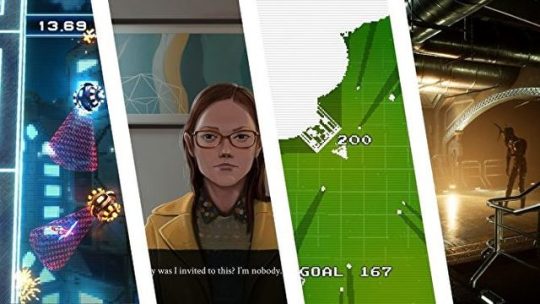
Unknown Pleasures: The most august https://ift.tt/2NbjYb9
A friend from the midlands once lamented that she’d always lived there. How absurd it was to live on an island, but directly in the middle of it. I can now say, having lived in two coastal cities, that living on the edge of it is very much the same, except that there are much better chip shops and the rain is more … oceany.
It is currently hacking it down out there and I don’t want to go home in it. Join me once more than, readers, for our regular round up of the best new games on Steam that you’ll never see on a billboard. It’s Unknown Pleasures.
Gazing wistfully into the deep this week: algorithmic therapy, Scandinavian body horror, and the ol’ rotate and thrust.
Apsulov: End of Gods £15.49 / €16.79 / $20
First person horror games are usually terrible, and in all the same ways. This is great news for me because I hate them anyway so it makes very little difference, but someone’s only gone and made one I like. Apsulov is gruesome. Its very first scene is horrible, with you (an Alice, it turns out, which explains the latent magic powers) operated on by some robotic apparatus at the whim of an unseen, intensely threatening entity that’s very quick to anger. Something’s wrong with your throat, so you’re all gurgly and choking and it’s horrible, but for once it doesn’t feel sadistic (obviously the villain is sadistic, but the game doesn’t feel so. It’s meant to be horrible, not pornographic).
You escape, of course, and flee a facility, dodging muttering, screaming shamblemen, pursued by your tormentor’s evil beast, and piecing together where and who you are. Scientists have opened a sinister gate or screaming obsidian hellcube or some other thing that only a colossal fool would open, and apparently the Norse gods are involved somehow. Creeping, rapidly growing tentacles are poking through, gigantic valkyrie shields line one lab, and since your captor drilled something into your head, you have the power to see magical sigils. You’re important somehow, but how it all ties together is a mystery. This is all excellently done, and I’m genuinely intrigued to find out more. Even the occasional jump scares didn’t feel cheap, nor the pillar of the horror – that’s the dread and revulsion, and secondary to that, the wider horror of what this event means for earth in general.
I’m impressed. Oh, but the bloody keypads are a joke. You have to ‘use’ them and then take your hand off the mouse and use the arrow keys to type the numbers in. Deus Ex let us use the number pad nineteen years ago, damn it. Come on.
Exception £11.39 / €12.49 / $15
This wasn’t the game that sparked it, but I’ve had a right moan about “the 80s aesthetic” in games this week. Did you know it’s possible to style your game after something that isn’t synthwave and neon? It’s true, I saw a game do it once.
Exception is enthralling, though, and its presentation is a large part of that. It’s a simple action platformer, with a plot about emptying a woman’s computer from a load of viruses that I skipped entirely thanks to built-in options that I respect mightily. You’re a wee robot who dashes about obstacle courses, wall jumping, slashing up hostile robots, and generally dashing to the exit. Several times each level, you’ll touch a waypoint that reorients the whole level, zooming out and rotating and setting you back along the same course but upside down or along a different axis. It’s very cool and the movement flows freely and comfortably, including your attacks.
The vast majority of enemies are easily done in without altering your path, and you’re periodically given new attacks and powers that I didn’t bother with at all (frankly they seemed more trouble than they were worth). Occasional bosses take half a dozen hits and attack in simple enough patterns that they don’t disrupt things too much either. Everything’s bright and fast and spectacular, and even now, at synthwave saturation point, the soundtrack is a perfect accompaniment that drives you on when the wrong beats would undermine the action.
Phantom Rose £11.39 / €12.49 / $15
It’s another one. It’s another bloody deckbuilding roguelike. You’re doing it on purpose aren’t you?
Phantom Rose does things a little bit differently to the many others in its class. Typically in a deckbuilder you’ll draw a handful of cards and choose which to play. Here, there’s some kind of initiative system going on behind the scenes too. In each round of a fight, you and your opponent will line up cards (5 altogether, giving an advantage to one or the other of you). Yours are randomly chosen from your hand, but you can replace some or all of them from another hand drawn at the bottom of the screen. When you’re satisfied, you start the turn and cards play out from left to right.
There’s a big focus on status effects and buffs like Vampiric Whatever, which gives a chance of restoring health when you attack, or focus, which helps you break through defences. It may get complicated later but was easy to grasp for at least the first two floors. Your path goes along a grid from top left to top right, always (until you reach a map edge) offering two options. I didn’t get the sense that these make a drastic difference in terms of risk or reward, with the exception of occasional “maid” rooms, where you fight a powerful monster to free an amine maid (fairly mild on the tacky anime bullshit meter) who’ll reward you with a special item.
I like that one of the attacks lets you hit a monster with their own attack rating instead of yours. That’s a fun trick. It moves at a brisk pace too, and I even appreciate the artwork. All that red and white and black makes for a bold style.
It feels a bit too easy to run out of good attacking cards. But that might come down to practicing more.
Rashlander £2.89 / €3.29 / $4
Rashlander is a modern form of one of those old 2D rotate and thrust gravity games, whose names, aside from Thrust and Gravity Power, escape me. You pilot a wee ship about a sometimes absurdly hazardous area, aiming to land it on a warp pad to move on to the next level. Gravity and inertia are important tools and potential threats, as there’s a basic Newtonian physics system, making navigation tricky and rewarding. Your default ship (more are unlockable, although they’re balanced so that each presents its own challenge) is fragile and lives are limited. In case that wasn’t cruel enough for you, fuel is also highly limited, and when you run out you explode.
It’s bloody hard. I’m a bit rubbish at it. Each warp pad also offers an upgrade, although some have a downside (one increases fuel capacity but scrambles in-game text, an inventive and somewhat maddening invention), and some are a mixed blessing as they change the way the ship handles, which means re-learning on the fly, potentially under dangerous circumstances. While it’s not a cruel game, it’s somewhat antagonistic, although more for comic effect than anything. Levels have hidden collectables and bonus landing pads if you fancy a challenge, but it’ll likely be a while before you’re good enough to risk those as a matter of course.
Eliza £11.39 / €12.49 / $15
The cult of the algorithm is one of the biggest and most insidious disasters of our already disaster-laden era. Eliza is an exploration of this, and of the mental health crisis, and of tech startup ‘culture’, and of counselling. It’s a visual novel in which you play as Evelyn, a new recruit for the eponymous business, which is a counselling service in which all the counselling is done by an AI. The humans like Evelyn are just there to put a face on it, to the extent that they’re not allowed to say anything but whatever script the algorithms produce, based on a vast bank of heuristic data and the patient’s verbal analysis, biological data like heart rate, perspiration and so on. They can’t even interpret.
I did a bit of basic counselling training a long time ago. It’s something I’ve long been interested in, and have experienced and contemplated from many angles. I was all set to loathe Eliza simply for suggesting the idea, fearing the HIGNFY effect, that some absolute piece will get wind of it and not realise what a godawful idea this is.
And yet.
Within the very first session I was haughtily telling the system off for being an atrocious counsellor – outright lying to a patient, for one – but then the next chapter (they’re comfortably short) kicked in. Evelyn meets with an old, estranged friend for lunch, and their shared past is hinted at. She goes to a conference in which a key speaker is a former colleague, who announces that he wants to go further than Eliza, and roll out technology that will directly interface with a patient’s brain. It’s a hybrid of electroconvulsive therapy, VR therapy, and everything else Eliza already does. He also openly criticises the incredible and shameful ignorance the tech people have of psychological research that isn’t jazzed up with some faddy nerd bullshit (I paraphrased). And I’m hooked.
Much as I see the obvious downsides of this system (and not even addressing the issue of putting this in the hands of a private business, let alone a heap of silicon valley jebs)… is it actually worse than what we have now? If not this, then what are we gonna do, magically summon the hundred thousand competent and willing and experienced counsellors and doctors and therapists we need to deal with the absolutely appalling state of mental health treatment in, let’s face it, most countries?
Eliza is obviously the pick of the week.
I tangent. Eliza touched on all of the issues in under an hour. The personal story of Evelyn, the problems she had in her hold job, her own mental health, the troubles faced by her patients, their concerns with the system, its sinister dystopian possibilities, and, despite my distaste, its potential benefits. That’s not just a good idea, that’s a good idea someone really cares about and understands, and has the talent to write.
August 16, 2019 at 12:29PM
0 notes
Text
Core Defense tower defense coming January 16th

Core Defense roguelike tower defense aims at a release on Linux, Mac and Windows PC. Thanks to developer ehmprah who is eager to bring the tower defense to Steam or pre-purchase the game on Itch.io. After releasing the multiplayer tower defense game Coregrounds in 2018. Lead dev Mario "ehmprah" Kaiser went solo. Since he wanted to work on a single-player spinoff. Reinventing the tower defense genre yet again. So now, Core Defense is due to release on January 16th on Itch.io. The whole idea behind the project is to fuse tower defense genre. Working it in with the best of roguelike and deckbuilding games. Doing so in a simple, yet enticing and addictive formula. One that will put players into a pleasant challenge. Keeping you coming back for more.
Core Defense Teaser Trailer
youtube
"I wanted to make a game which gets you hooked easily. But will take hundreds of hours to master. Then finally beat on the highest difficulty" – Mario "ehmprah" Kaiser.
Features:
Defeat fifty waves without losing your core
Choose one out of several randomly rolled rewards after each wave
Build a winning combination of walls, towers, abilities, upgrades and modules
Enjoy infinite Core Defense replayability. With permadeath, randomized waves and rewards
Play in short sessions of about an hour or binge for hours on end
Beat a high base difficulty and many additional difficulty levels
Unlock dozens of quirky achievements
Coregrounds was the tower defense game launching back in 2018. This project was also shut down in early 2019. Sadly, due to unnamed reasons. But after the shutdown, lead developer Mario "ehmprah" Kaiser still had the itch. So he decided to scratch that by reinventing the tower defense genre. At that time, his solo project Core Defense development began. So now, after a public alpha for the roguelike tower defense. Core Defense development has come together thanks to the community. While entering First Access on Itch.io on January 16th. Due to relase on Linux, Mac and Windows PC. But don't worry, your Itch.io purchase will include a Steam key. And the games also coming to the Play Store and the App Store later this year.
0 notes